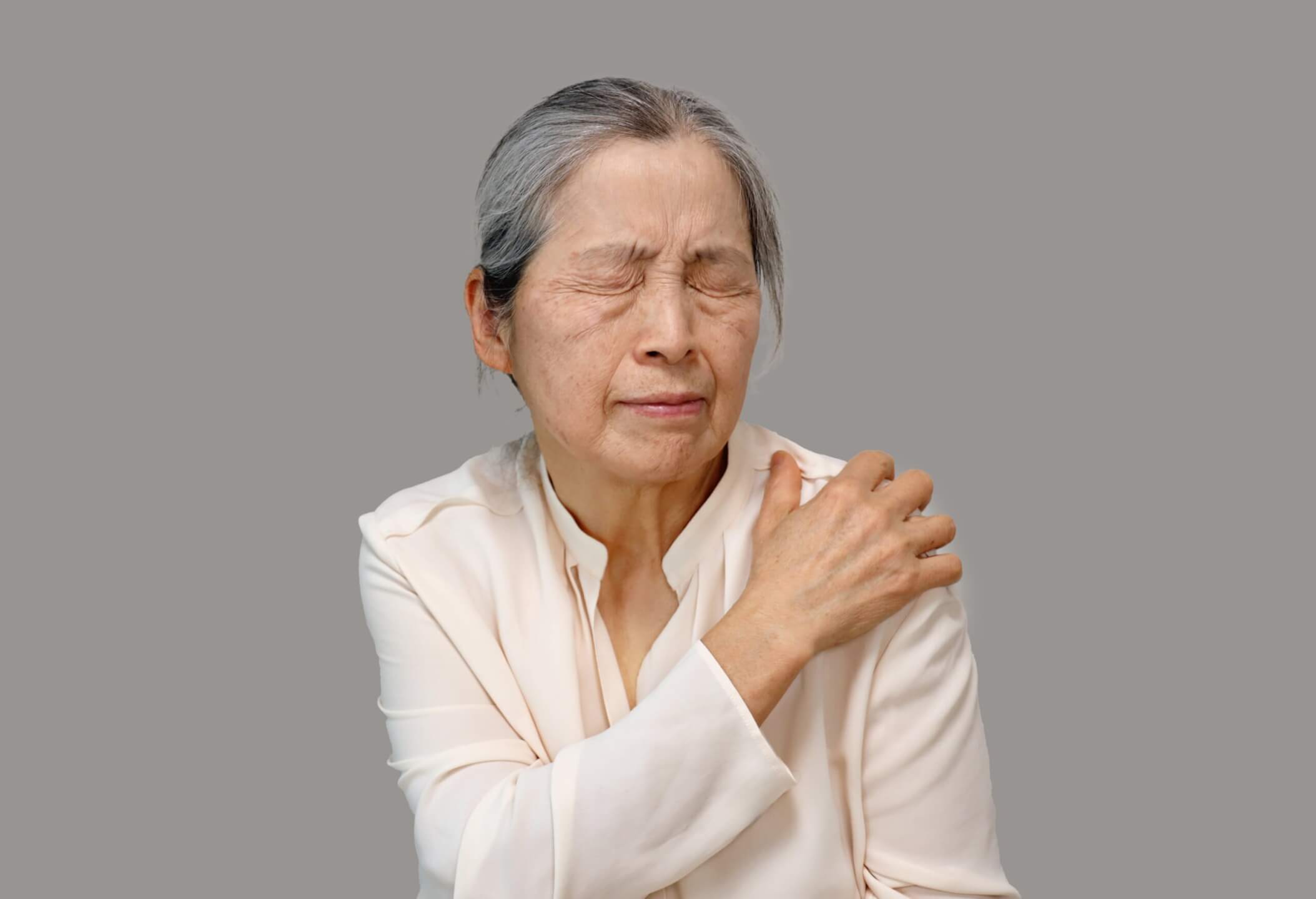
Frozen shoulder, also called adhesive capsulitis, is a painful and restrictive shoulder condition that can make the simplest daily activities – like brushing your hair or reaching for a cup – feel almost impossible. This condition is most common in women aged 40–60, and while it can resolve over time, it often disrupts quality of life for months or even years.
To better understand why this condition appears so frequently in midlife women, we spoke with Dr Alison Linn (Osteopath), an experienced osteopath with over 34 years in practice, who emphasises self-management and empowering patients in their recovery.
What exactly is a frozen shoulder?
A frozen shoulder occurs when the capsule of connective tissue around the shoulder joint becomes stiff and inflamed, restricting movement.
While the exact cause isn’t fully understood, several risk factors are known:
- Hormonal changes, especially menopause, which is linked to lower estrogen and increased inflammation
- Health conditions such as diabetes, hypothyroidism, or past cancer treatments
- IVF interventions or other hormone-related therapies
- Previous shoulder injuries or trauma
In many cases, a frozen shoulder resolves on its own within 12–18 months, though recovery can sometimes take up to two years. Surprisingly, imaging scans often show little damage, apart from mild calcification or bone thinning, even though symptoms can be intense.
Recognising frozen shoulder symptoms
Frozen shoulder can be painful and restrictive, affecting movement whether you move your arm yourself or someone else moves it for you.
Common symptoms include:
- Difficulty with simple movements, like brushing hair, reaching for a kettle, or putting a hand in a back pocket
- Night pain, especially when lying on the affected side
- Loss of strength and shoulder sensitivity
- Restriction on one side, though very rarely, both shoulders can be affected
- In some cases, minimal pain but significant loss of movement
Interestingly, some patients regain full movement under general anesthesia, which highlights how protective muscle responses and pain contribute to the restriction.
The three phases of frozen shoulder
Frozen shoulder often develops in three stages, although not everyone experiences each phase clearly:
- Freezing phase – increasing pain and stiffness as movement gradually reduces.
- Frozen phase – pain may ease, but the shoulder feels locked, making lifting and rotating the arm difficult.
- Thawing phase – gradual improvement in mobility and reduction in pain.
The entire cycle typically lasts 12–18 months, but some cases linger for two years or more.
How osteopaths help treat frozen shoulder
There isn’t a single guaranteed treatment, but a personalised approach often gives the best results. Many patients benefit from a combination of therapies, including:
- Manual therapy – gentle techniques used by osteopaths to support shoulder mobility
- Exercise therapy – simple movement and incidental exercise often work as well as structured exercise programs
- Dry needling – may be used by some osteopaths to help improve range of motion and ease discomfort
- Other modalities – some osteopaths may also offer acupuncture or Traditional Chinese Medicine (TCM) approaches as part of a broader management plan
Some of these therapies have emerging or supportive evidence in selected cases, but outcomes vary between individuals.
Other modalities that may be considered:
- Hydrodilation – expanding the shoulder capsule with fluid (usually performed in a clinical setting)
- Shockwave therapy or platelet-rich plasma (PRP) and laser therapy – sometimes used in persistent cases, evidence is evolving, and these are typically adjunctive
- Anti-inflammatory approaches – supplements, or herbal remedies, may support general health but should be discussed with a qualified health professional
- Cortisone injections – can help with pain but are usually used cautiously and often under imaging guidance
The gold standard approach recommended by international experts emphasises:
“Optimise your health, keep moving, and recovery will come faster.”
In other words, reduce inflammation systemically, move the shoulder as much as is safely tolerable, and work with your practitioner to address fear or anxiety about movement.
Recovery tips from the osteopath
- Keep moving, even if it’s uncomfortable, as long as the pain is manageable
- Focus on whole-body health to reduce systemic inflammation
- Prioritise good nutrition and a positive mindset to speed up recovery
The key message? Frozen shoulder is frustrating, but temporary. With the right support, healthy movement, and a focus on reducing inflammation, most people regain their mobility and return to normal life.
Osteopaths can play a supportive role in your management
This blog has been reproduced with the permission of Dr Alison Linn (Osteopath) at Rozelle Osteopaths.
